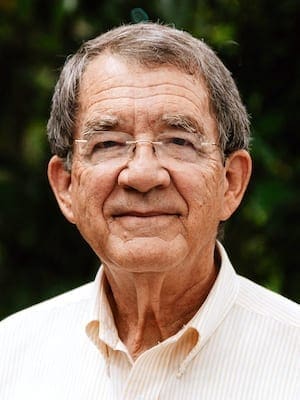EthicsDaily.com’s E3 Initiative – educating, engaging and empowering people of faith – has prompted some thinking about just what happens when the educational dimension of discipleship is embraced, engaged and put to powerful use.
As usual, I find that the church’s self-portrait in the book of Acts offers helpful guidance for dealing with faith’s “growing pains.”
The earliest of Jesus’ disciples were Jews who naturally understood Jesus and his call as part of the ongoing call of the covenant people.
What God was disclosing in Jesus was in line with Moses, the prophets and the whole pattern of faith and hope that had sustained the people of Israel for many generations.
But there was a “growing edge” to what they experienced in Jesus that pushed against current boundaries of Judaism.
He reached out to Gentiles, to the marginalized, to women, to people who were not generally thought to be “worthy” of this wonderful thing they had experienced Jesus to be.
In fact, if we look closely, we notice that a key reason Jesus got into so much trouble was not that he was offering the good news of God’s grace and love, but because he was offering it to the wrong people.
So, the early Christians – the earliest expression of the “church” – found themselves having to deal with some tensions between what they had always believed, and in terms of which they understood their relationship to Jesus, and what Jesus had actually called them to be and to do.
There are few places that illustrate that tension more clearly than the story found in Acts 10.
Cornelius is a Gentile, a prominent one, and one who is very respectful of the Jewish faith.
He is called a “God-fearer,” which refers to one who is not Jewish and does not seek to convert and become one.
But he is a Gentile, and there are certain rules about association with Gentiles that must be followed by faithful Jews.
The short version of the story is that Cornelius is instructed by a messenger of the Lord to send for Simon and have him provide first-hand instruction about the gospel.
Simon receives this assignment in a dream that symbolically invites him to relieve his hunger by partaking of food, some of which is unacceptable for a Jew to eat.
He responds, perhaps remembering Jesus’ report of his wilderness temptation experience, by resisting the temptation – three times. Notice the parallel?
We can almost hear Peter’s thinking. “Lord, surely you don’t expect me to go against something I have always believed and that generations before have taught me is the sacred truth?”
And we can hear the Lord’s response. “Careful, Peter. What I have made and embraced as good and called you to embrace as well, you don’t have any business calling common or unclean.”
The obvious point of the story is that Simon Peter was being called to place a higher priority on what God was inviting him to do in this new partnership of faith than on what he had always believed, no matter how sacred those beliefs were.
Think about the implications of that.
The story is not simply an episode in the life of a famous disciple. It is rather a clear and powerful illustration that even the staunchest of early disciples (who can think of a bolder representative than Peter?) had some growing to do in his journey of faith.
Embracing Christ meant more than just saying, “Yes,” to a question about accepting Jesus as Lord and Savior; it meant opening up one’s entire life to a process of refinement and reorientation that would require a willingness to examine, and perhaps give up, some time-honored beliefs and ideas that would stand in the way of faithfulness to Christ’s call.
It is easy to apply this lesson to things like prejudice – such as the attitude of most Jews toward Gentiles in the first century, or racial attitudes that have been part of our more recent history–and it certainly is applicable to that.
But it may be more far-reaching than social attitudes and beliefs, and here is the challenge of this text for all levels of Christian community.
Simon Peter brought with him to his journey of discipleship a way of thinking about God and God’s relationship to the world – beliefs and ideas that were held as sacred and requiring acceptance and obedience.
His experience with God in Christ put him on a path seeing many of those beliefs challenged and refined by what Jesus was revealing about God.
Faithfulness to this revelation was calling him not to “dig in” and defend what he had always believed, but to open himself up to new ways of understanding his relationship with a God who is not bound by beliefs, no matter how long-held or how powerfully enforced.
I wonder if his experience is really any different from our own. I wonder what God is calling us to embrace that we have said “No!” to because we have always believed they were “common or unclean.”
Beliefs, even theological beliefs, have a way of becoming chains that bind us and prevent us from moving faithfully where God’s call in Christ is calling us to move.
Education to engage and empower seems to involve not only information but also the liberation of breaking the chains of bondage that bind us to ways of thinking that restrict our service as agents of the gospel.
Working on this first “E” seems a prerequisite to the other two.
Professor emeritus of religious studies at Mercer University, a member of Smoke Rise Baptist Church in Stone Mountain, Georgia, and the author of Keys for Everyday Theologians (Nurturing Faith Books, 2022).

